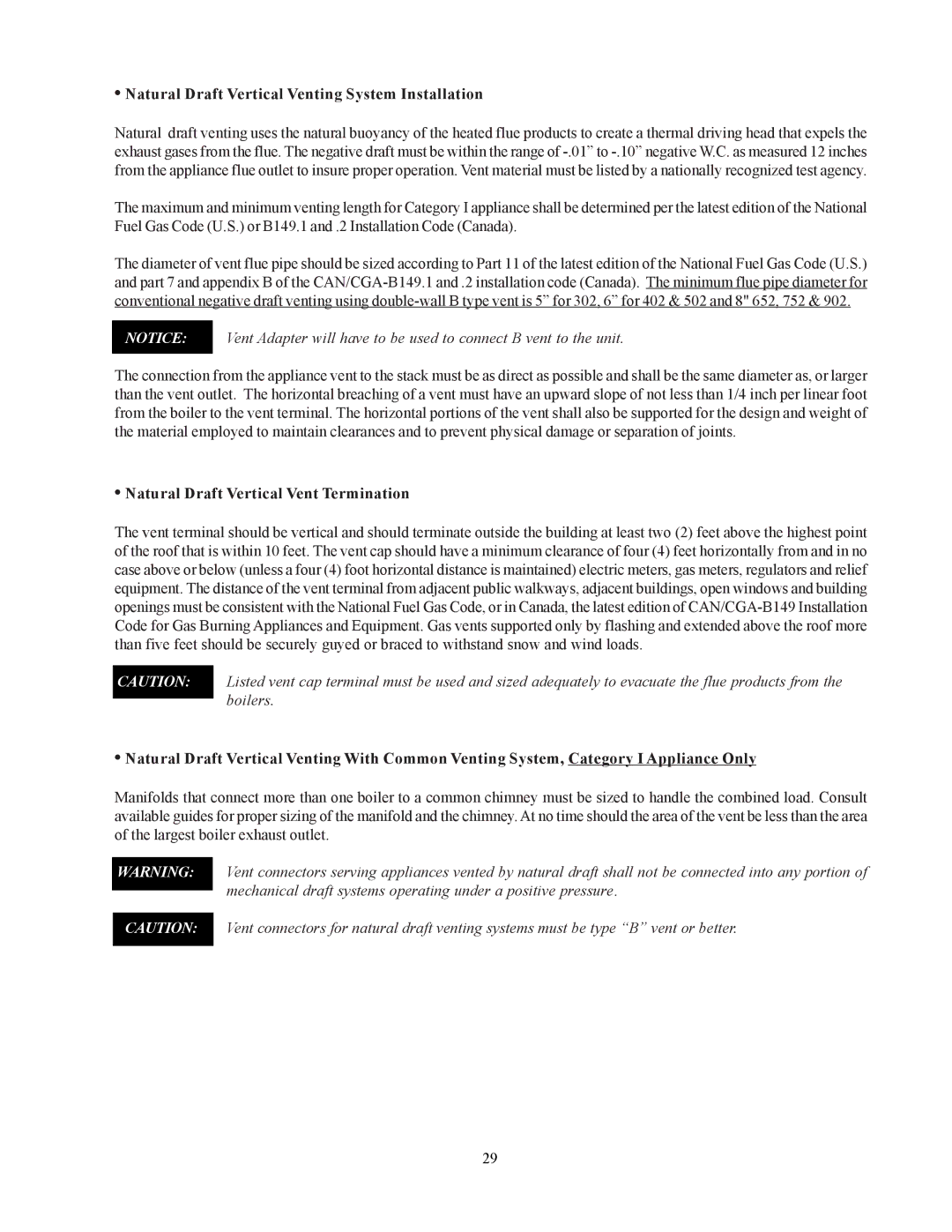302-902 specifications
The Raypak 302-902 is a highly efficient, reliable, and versatile heating solution commonly used in residential and commercial pool heating applications. Known for its exceptional performance and advanced technology, the Raypak 302-902 has become a favored choice among pool owners looking to extend their swimming season and enhance comfort.One of the main features of the Raypak 302-902 is its robust construction. Built with a copper heat exchanger, it is designed to withstand the rigors of continuous use while offering superior heat transfer capabilities. The heat exchanger is also designed for easy maintenance, enabling pool owners to keep their systems running efficiently for years.
The Raypak 302-902 employs advanced digital controls, which provide precise temperature regulation. This modern control system allows users to set their desired water temperature with accuracy and maintain it consistently, ensuring a pleasant swimming experience. Additionally, these digital controls feature self-diagnostic capabilities, alerting users to potential issues, which aids in quick troubleshooting and maintenance.
In terms of energy efficiency, the Raypak 302-902 stands out with its ability to harness energy effectively, leading to significant savings in operational costs. It is equipped with an efficient gas burner, which optimizes fuel consumption while delivering rapid heating performance. This efficiency is complemented by its ability to operate with natural gas or propane, making it adaptable to various setups and preferences.
The unit also prides itself on its environmentally friendly operation. It meets stringent regulations for emissions, ensuring that pool owners can enjoy a pool heating solution that is both effective and reduces its ecological footprint. This focus on sustainability has made it a popular choice among environmentally conscious consumers.
Moreover, the Raypak 302-902 is designed for versatility. It can be easily integrated with existing pool systems and is compatible with both in-ground and above-ground pools. This flexibility allows it to cater to a wide range of pool sizes and configurations, making it suitable for both residential and commercial applications.
In conclusion, the Raypak 302-902 offers an array of features, technologies, and characteristics that make it a top contender in the pool heating market. With its durable construction, advanced digital controls, energy efficiency, and environmentally friendly operation, it remains a reliable choice for those seeking comfort and convenience in their swimming experience. Whether for a backyard oasis or a commercial facility, the Raypak 302-902 delivers consistent performance and accessibility.

